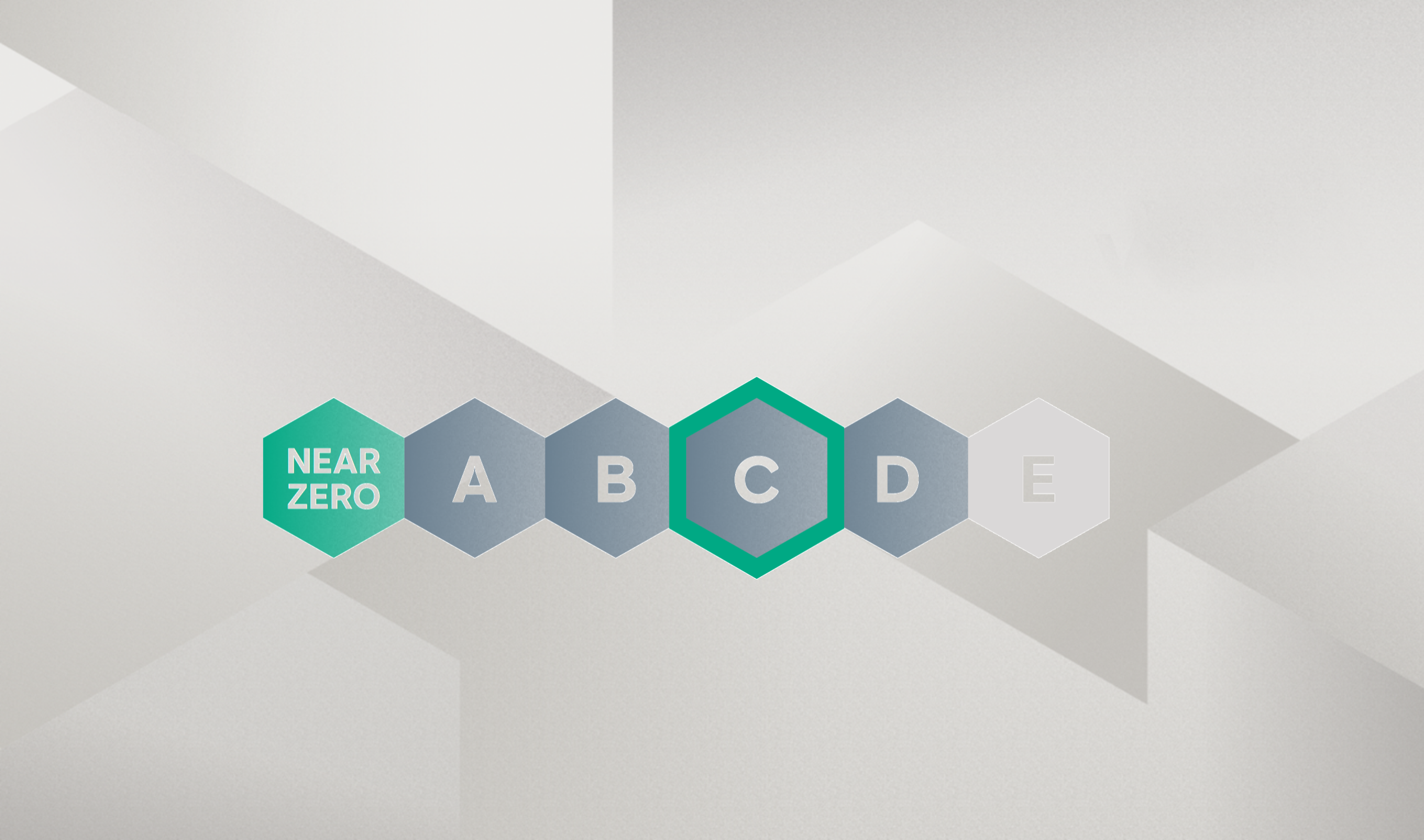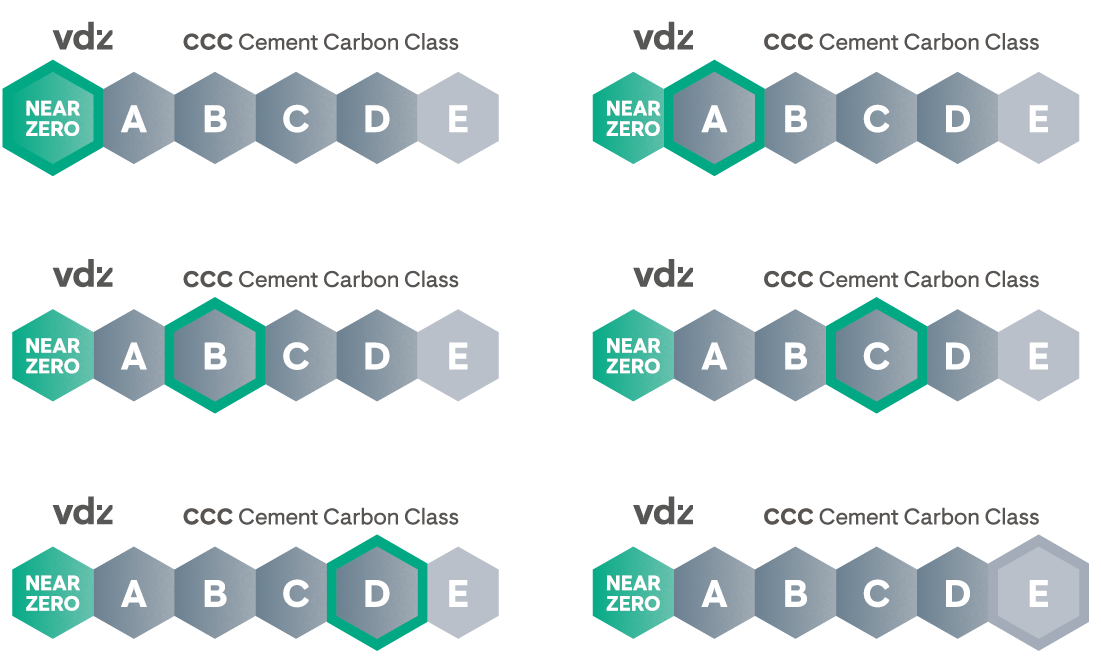Basic principles
The International Energy Agency (IEA) has developed a system for categorising cements on the basis of their greenhouse gas emissions in order to incentivise the low-emission and, in the long term, virtually emission-free production of cement. The concept was further specified for implementation in Germany in the stakeholder dialogue ‘Lead markets for climate-friendly raw materials’ of the Federal Ministry for Economic Affairs and Climate Action (BMWK).
Building on this, the German Cement Works Association (VDZ) has introduced a voluntary CO₂ label for cement (‘CCC label’) initiated by the private sector. In future, cements can be classified into a ‘Cement Carbon Class’ (CCC) depending on the greenhouse gas emissions of the products. The information is provided as equivalent CO₂ emissions (CO₂Equ) and the corresponding classes are derived from the thresholds defined in the BMWK concept ‘Lead markets for climate-friendly raw materials’.


